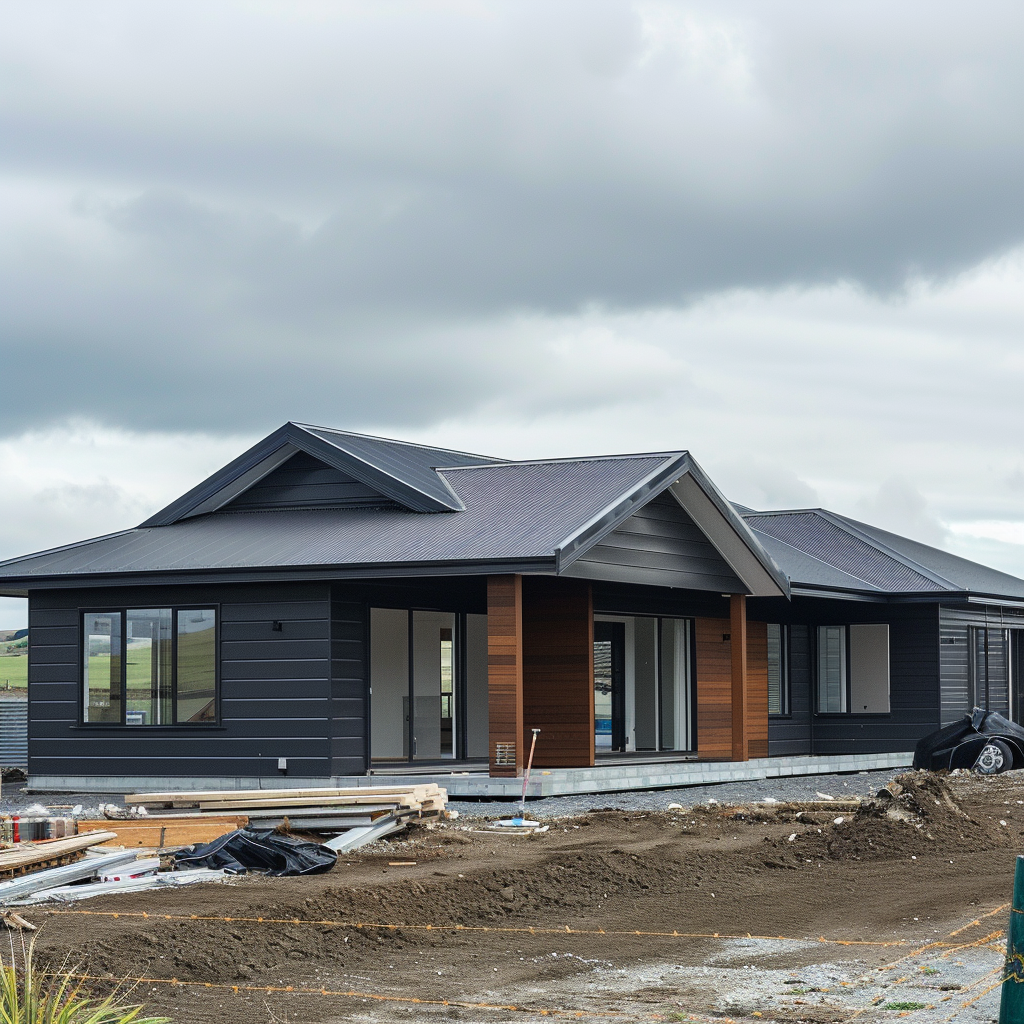Building a new home is an exciting venture, but it can also be complex, especially when it comes to financing. In New Zealand, one of the key steps in the journey to creating your dream home is securing a construction loan. Understanding how these loans work and how to navigate the process can make all the difference.
01. Understanding Construction Loans: A Closer Look
Construction loans, unique in their structure and purpose, stand out from standard home loans. These loans are specifically curated to finance the building process of your dream home, serving as a pillar of support throughout your journey.
Structured Disbursements: A Major Highlight
A defining feature of construction loans is their structured disbursements. Unlike traditional loans that provide the entire sum upfront, construction loans adopt a more strategic approach. The loan amount is released in stages as your build progresses. This method ensures that funds are available precisely when you need them during the different phases of construction.
For example:
- First Disbursement: Usually allocated to purchasing land or paying off existing land loans.
- Subsequent Disbursements: These can cover costs such as laying foundations, framing, interior finishing, and so forth.
By releasing funds this way, lenders minimise their risk and borrowers maintain better control over their finances during the build.
Interest-Only Payments: Easing Financial Pressure
During the construction phase, another key benefit comes into play. You may only be required to make interest-only payments on the amount that has been disbursed so far. This aspect can significantly ease financial pressure during the build phase when other unforeseen expenses may arise.
"Remember, with construction loans you're only paying interest on what you've used – not the total loan amount."
This means if your first disbursement was for $150,000 out of a $500,000 loan, you'll only pay interest on that $150,000 initially. As each stage is completed and more of the loan is disbursed, your interest-only payments will adjust accordingly.
In conclusion, understanding these key facets of construction loans – structured disbursements and interest-only payments – can empower you with knowledge and confidence as you navigate this path towards building your dream home in New Zealand.
02. Laying the Groundwork
Prior to diving into the application process for a construction loan, it's crucial to have a well-laid plan. This plan comprises several key steps, each of which plays a significant role in your success:
- Partnering with the Right Builder: The importance of choosing a reputable builder cannot be overstated. Look for a builder who not only has an excellent track record but also experience in managing projects similar to yours. Remember, lenders often prefer fixed-price building contracts as they provide a clear cost structure, reducing their risk. Consider asking potential builders for references and samples of their work to ensure you're making an informed decision.
- Assessing Your Financial Position: Secure knowledge of your financial standing is paramount when embarking on a construction project. Understand where you stand in terms of equity and consider what additional security you might need to offer to secure financing. This could include assets like existing property or savings.
- Crafting a Comprehensive Budget: A detailed budget is not just about listing expected costs - it's about anticipating every aspect of your build. This should cover everything from materials and labour costs to permits and inspections. It's also wise, if not essential, to include a contingency budget for unexpected expenses that may arise during construction.
- Having this groundwork in place will not only make the loan application process smoother but also gives you greater confidence and control over your project as it progresses. Remember, knowledge is power - by understanding these key steps, you're already on the path to successfully securing your construction loan and creating your dream home.
03 Navigating the Loan Process:
Embarking on the journey of securing a construction loan involves several key steps, each requiring careful preparation and understanding. Here's a more in-depth look into the process:
- Loan Approval: Before you can secure your construction loan, your lender needs to approve your application. This stage involves presenting detailed information about your project to validate its feasibility and showcase your preparedness. Here's what you will need:
- Comprehensive Plans: You'll need to provide blueprints or plans for your new build. These should be detailed and professionally drafted, clearly illustrating the scope and specifications of your project.
- Detailed Budgets: Your lender will want to see a comprehensive budget outlining anticipated costs. This includes everything from materials and labour, to permits and inspections fees. Remember to factor in a contingency budget for unexpected expenses.
- Contracts: Any contracts with builders, contractors, or suppliers should also be presented. These documents offer proof of agreed costs and timelines, further validating your budget and schedule.
- Progress Inspections: Once your loan is approved, it doesn't mean the lender's involvement ends there. Lenders will carry out inspections at various stages of construction before releasing further funds. These progress inspections ensure work is being completed as planned and quality standards are being met. It's essential to maintain open communication with your lender during this phase to avoid any delays in fund disbursement.
- Insurance Requirements: A crucial aspect often overlooked is insurance during construction. Builders risk insurance is essential, protecting you against unforeseen events such as natural disasters or theft that could impact construction. Ensure you have this coverage in place before work begins - it not only provides peace of mind but also enhances the confidence of your lender in the successful completion of the project.
- Navigating through these steps may seem daunting but remember - each step you take is a step closer to your dream home. With the right knowledge and preparation, you can confidently traverse this journey and secure your construction loan.
04. Planning for the Future
Congratulations on completing your dream home! However, this is just the beginning of your financial journey. The construction loan you took out will now turn into a regular home loan, which will require you to make both principal and interest payments instead of just interest payments.
In this section, we'll explore what this transition entails and how it affects your financial planning.
Transitioning from a Construction Loan to a Home Loan
Most construction loans in New Zealand are designed to automatically convert into a standard home loan once construction is finished. This change is important because it affects how you repay the loan:
- During Construction Phase: You only have to pay the interest on the amount used for construction. This helps keep your monthly payments low while you might still be paying rent or another mortgage.
- After Construction Phase: Your repayments will increase as you start paying off both the principal amount borrowed and the interest.
This shift can have a significant impact on your monthly budget, so it's crucial to be prepared for it.
Evaluating End-Value and Long-Term Financial Planning
Another key aspect of planning for the future is understanding the potential value of your property once it's completed. This is known as the end-value.
Why does end-value matter?
- Loan-to-Value Ratio (LVR): A higher end-value could potentially lower your LVR, which means less risk for lenders and possibly better loan conditions or interest rates for you.
- Building Equity: If your property's value increases over time, it can build equity that can be used for future investments or financial needs.
It's important to consider these factors when making decisions about your property and long-term financial goals.
To wrap up, constructing your dream home is just one step in your ongoing financial journey. By understanding how your loan changes after construction and considering your property's potential value, you can continue to make informed choices that contribute to your long-term financial well-being. Remember to seek advice from a financial advisor to ensure your plans align with your overall financial goals.
Keywords for Search
construction loans nz, financing new home build, understanding construction loans, managing construction finances, phased loan disbursement, interest-only construction loans, selecting a builder nz, assessing financial position for construction, budgeting for new construction, navigating construction loan approval, loan application process for new build, progress inspections in construction, securing builders risk insurance, transitioning from construction to home loan, evaluating property end-value, long-term financial planning in construction, securing land for construction, detailed budget planning, fixed-price building contracts, contingency budgeting for construction, construction loan interest rates nz, meeting nz building standards, construction loan application tips, construction loan disbursement schedule, construction project insurance requirements






